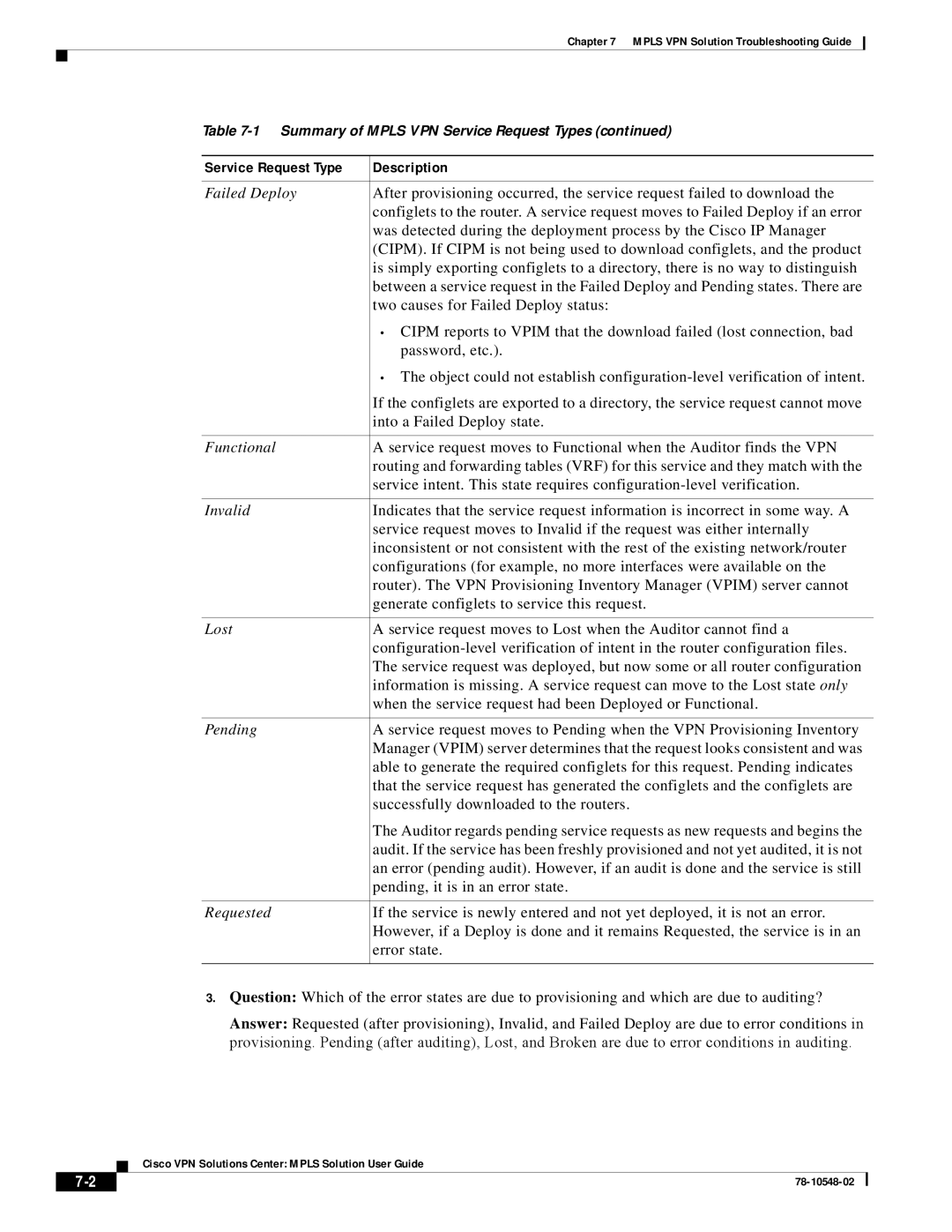
Chapter 7 MPLS VPN Solution Troubleshooting Guide
Table
Service Request Type | Description |
|
|
Failed Deploy | After provisioning occurred, the service request failed to download the |
| configlets to the router. A service request moves to Failed Deploy if an error |
| was detected during the deployment process by the Cisco IP Manager |
| (CIPM). If CIPM is not being used to download configlets, and the product |
| is simply exporting configlets to a directory, there is no way to distinguish |
| between a service request in the Failed Deploy and Pending states. There are |
| two causes for Failed Deploy status: |
| • CIPM reports to VPIM that the download failed (lost connection, bad |
| password, etc.). |
| • The object could not establish |
| If the configlets are exported to a directory, the service request cannot move |
| into a Failed Deploy state. |
|
|
Functional | A service request moves to Functional when the Auditor finds the VPN |
| routing and forwarding tables (VRF) for this service and they match with the |
| service intent. This state requires |
|
|
Invalid | Indicates that the service request information is incorrect in some way. A |
| service request moves to Invalid if the request was either internally |
| inconsistent or not consistent with the rest of the existing network/router |
| configurations (for example, no more interfaces were available on the |
| router). The VPN Provisioning Inventory Manager (VPIM) server cannot |
| generate configlets to service this request. |
|
|
Lost | A service request moves to Lost when the Auditor cannot find a |
| |
| The service request was deployed, but now some or all router configuration |
| information is missing. A service request can move to the Lost state only |
| when the service request had been Deployed or Functional. |
|
|
Pending | A service request moves to Pending when the VPN Provisioning Inventory |
| Manager (VPIM) server determines that the request looks consistent and was |
| able to generate the required configlets for this request. Pending indicates |
| that the service request has generated the configlets and the configlets are |
| successfully downloaded to the routers. |
| The Auditor regards pending service requests as new requests and begins the |
| audit. If the service has been freshly provisioned and not yet audited, it is not |
| an error (pending audit). However, if an audit is done and the service is still |
| pending, it is in an error state. |
|
|
Requested | If the service is newly entered and not yet deployed, it is not an error. |
| However, if a Deploy is done and it remains Requested, the service is in an |
| error state. |
|
|
3.Question: Which of the error states are due to provisioning and which are due to auditing?
Answer: Requested (after provisioning), Invalid, and Failed Deploy are due to error conditions in provisioning. Pending (after auditing), Lost, and Broken are due to error conditions in auditing.
Cisco VPN Solutions Center: MPLS Solution User Guide
| ||
|
